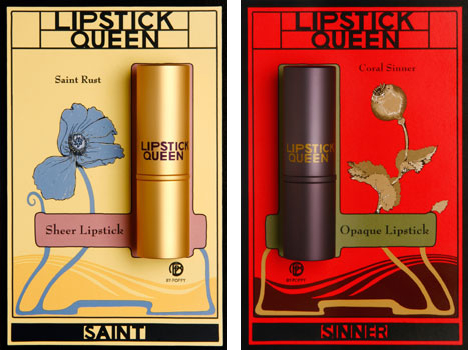It just goes to show I'm not totally crazy – here is a bona fide exhibition about beauty and cosmetics! Via Art History Newsletter, I learned that the Musée National de la Renaissance in Ecouen, France, presents Le Bain et le Miroir: Soins du corps et cosmétiques à la Renaissance. Alas, I cannot understand French and the website doesn't have an English option, but I'm pretty sure it has something to do with beauty and cosmetics. From what I can gather (did you know Google has a translation function?), included are combs, perfumes, mirrors and I believe even some makeup. There are also paintings and sculptures depicting ideal Renaissance beauty to put these objects in context. The exhibition is in conjunction with another exhibit focusing on beauty in from antiquity to the Middle Ages at the Cluny Museum. What's really amazing about that one is that L'Oreal analyzed the cosmetics to understand their composition. How cool would it be to research what people used back then for makeup?
L'Oreal is also partially funding the exhibition..I'm thinking I should get in touch with them to see if they want to have a contemporary beauty exhibit stateside. 🙂
Instead of design and art today I will be discussing a little cultural history. I finished up Teresa Riordan's Inventing Beauty: A History of the Innovations That Make Us Beautiful last night, (which, by the way, is a fun and easy read that I bet would appeal to a wider audience than just beauty addicts) and while I was reading I couldn't help but notice some inventions that seem novel now but actually have already been done many years ago. In a chapter on lipstick she discusses one introduced in the 1930s called "Tangee", (still in existence today) which was bright orange in the tube. Once applied on the lips it became a light reddish hue, depending on "how akaline the wearer's lips were." She notes that the company claimed the lipstick worked with the user's natural coloring to create a custom shade. This reminded me a lot of some relatively new products that have been touted for doing the same thing: Smashbox's O-Glow gel blush and O-Gloss, which, according to the company, work with your body's chemistry to create a custom color unique to you.
Riordan also talks about a series of lipsticks developed by the company Volupte. They were divided into two categories: Lady and Hussy. Lady was for the "girls who lean towards pale-lacquered nails, quiet smart clothes and tiny strands of pearls" while Hussy was for the "girl who loves exciting clothes, pins a strass pin as big as a saucer to her dress, and likes to be just a leetle bit shocking." Riordan further reports that Hussy outsold Lady 5 to 1. After reading this I think Poppy King, creator of Lipstick Queen, would definitely appreciate these names since her lipsticks are divided into two similarly-named types: Saint and Sinner.

(photos from lipstickqueen.com)
Sinner packs a whollop at 90% pigment, while Saint features a much lighter, softer wash of color at 10% pigment. "Sinning can be fun because it usually involves some indulgence in something taboo and delicious…It is positively naughty to get lipstick this opaque, rich and creamy with a matte yet silky finish." The description for Saint: "When I think of Saints I think of them as light, airy and floating above, beyond and around us…Absolutely no glitter (Saints are far too humble for such audacity)." The names refer not only to the lipsticks' texture but also point to the mood of the wearer. Someone feeling naughty may wear a bold color, while someone feeling sweet and saintly would wear a light, natural-looking shade.
In any case, it's interesting to take a look back and see the roots of the latest products and how they've been modified for our time.